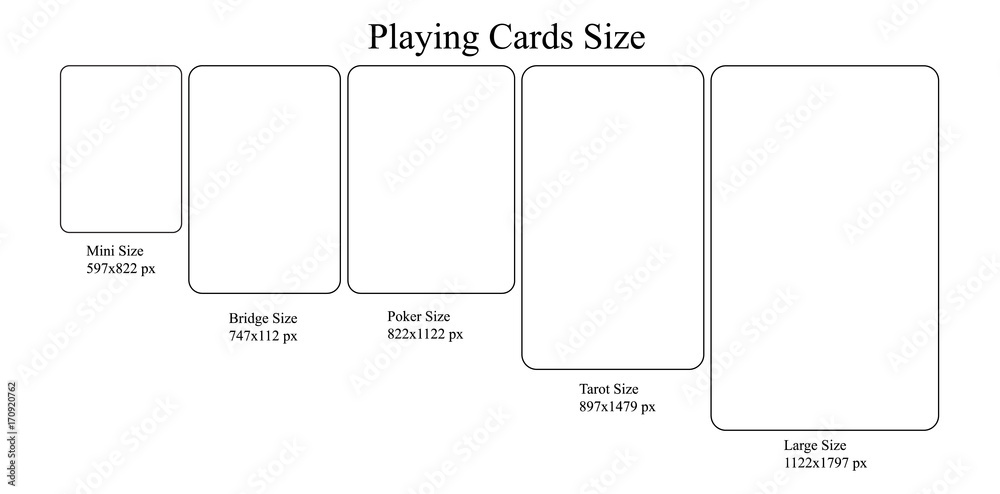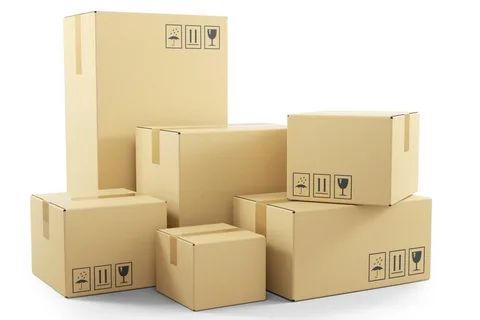When you order something from abroad, one of the most anxious waiting periods is when your shipment reaches customs. You see a status like “held in customs,” “awaiting clearance,” or “inbound into customs,” and you wonder: how long can a package stay in customs before it continues to me or gets returned? In this guide, we’ll dig deep into that question, covering many jurisdictions, typical timeframes, reasons for delays, how to track, examples from real users (e.g. Reddit), and tips to speed up the process. Along the way, I’ll use the term “package stay in customs” in a natural way, and include related keywords like “CBSA package tracking”, “how long do packages stay in customs Canada”, “how long can a package stay in customs USPS”, etc. (Note: this is by BuyCustomBox—just a small mention as per your request.)
Contents
- What Does “Staying in Customs” Mean?
- Key Factors That Determine the Time in Customs
- Typical Timeframes in Different Scenarios
- How Long Can a Package Stay in Customs — International / Generic
- How Long Can a Package Stay in Customs — Canada (CBSA)
- How Long Can a Package Stay in Customs — USPS / U.S. Customs
- How Long Do Packages Stay in Customs in Canada — Alternate phrasing
- Real‑Life Stories: What Reddit Users Say
- Why Delays Occur: Common Bottlenecks
- How to Track a Package in Customs (e.g. CBSA package tracking)
- What You Can Do to Help Get It Released Faster
- Risks & What If Customs Doesn’t Release It
- FAQs
- Final Thoughts
Let’s begin.
What Does “Staying in Customs” Mean?
When a package arrives in a country, it usually must pass through inspection by that country’s customs authority before final delivery. “Staying in customs” means the package is being held by customs officials for inspection, documentation review, or obedience to rules (duties, restricted goods, etc.). During that time, the parcel is in customs custody and isn’t visible in transit or delivered until cleared.
This “hold” is a standard part of cross‑border shipping. The length of that hold depends on many variables: the country, the shipping carrier, whether paperwork is complete, if there are duty payments or additional documentation, whether the item is flagged for inspection, and seasonal or staffing delays.
When we speak of how long a package stay in customs, or packaging stay in customs, we refer to that interval from when customs receives it to the point when it’s cleared and sent onward for delivery.
Key Factors That Determine the Time in Customs
Before jumping into numbers, it helps to understand what affects how long a parcel remains in customs. Here are the main variables:
- Country / jurisdiction: Different countries have different rules, capacity, risk thresholds, and procedural backlogs.
- Type of goods / content: If the item is restricted, regulated, agricultural, medical, or high value, more scrutiny may apply.
- Correctness and completeness of documentation: Invoices, item descriptions, HS codes, certificates of origin, permits, etc.
- Payment of duties and taxes: If fees are unpaid or under‑declared, customs may hold until payment is made or clarified.
- Inspection & verification needs: Random checks, physical opening, lab tests, or secondary screening.
- Volume & seasonality: During holidays, sales events, or peak periods, customs backlog increases.
- Customs staffing and efficiency: Some ports or centers have more resources and move faster than others.
- Carrier / shipping method: Express couriers (DHL, FedEx, UPS) often have priority channels, whereas regular postal services may take longer.
- Legal or regulatory issues: If the shipment is under legal review, disputes, or flagged for import compliance.
Because of all these, the time a package stays in customs is rarely uniform.
Typical Timeframes in Different Scenarios
Here we consider general estimates and known published times for various countries and services.
How Long Can a Package Stay in Customs — International / Generic
For many international shipments (excluding express couriers), a typical customs clearance takes between 1 to 7 business days if documentation is fine and no inspections are required.
If the parcel is flagged for further inspection or has missing paperwork, that timeframe could extend to 2 to 4 weeks or even more in rare cases.
Some sources say customs can hold a parcel for months depending on legal or regulatory complexities.
Thus, the safe generic estimate: from a few days up to several weeks for most shipments.
How Long Can a Package Stay in Customs — Canada (CBSA)
Canada has its own customs authority: the Canada Border Services Agency (CBSA). Here are known timeframes in the Canadian context:
- For a standard package with correct documentation, customs clearance often takes 1 to 3 calendar days.
- If more scrutiny is needed (e.g. restricted goods, import permits), it can stretch to 3 to 14 calendar days or more.
- In Canada, if a parcel is stored in a CBSA office or a sufferance warehouse (a temporary holding facility), it can be held for up to 40 days.
- If a shipment is in a bonded warehouse, there are cases where goods can be held for up to 4 years, though that is more applicable to commercial imports with special conditions.
- Also, per Canada Post, once your parcel is in customs, the postal service cannot intervene — you have to wait for CBSA to release it.
So for Canada, the normal range is a few days to a couple of weeks, but in worst cases up to 40 days (or significantly longer for commercial / bonded goods).
How Long Can a Package Stay in Customs — USPS / U.S. Customs (CBP)
In the United States, the governing body is U.S. Customs and Border Protection (CBP). When a parcel arrives, CBP may hold it for inspection or further review.
Here are known benchmarks:
- Under ideal conditions (documents in order, no inspection needed), express shipments through carriers like USPS, DHL, UPS often clear customs in 1 to 2 days.
- For regular or first‑class international mail via USPS, customs clearance often takes 7 to 14 days, depending on the destination and backlog.
- If there is a delay or customs holds the package (due to missing paperwork, inspections, etc.), it might stay in customs for up to 30 days or more.
- According to USPS / CBP rules and user reports: CBP can hold a package for 45 business days, during which the recipient is supposed to be notified if it is detained.
- In many Reddit user reports, some packages have been stuck in U.S. customs for weeks or even months.
Thus, for USPS / U.S. customs, a common expected window is a few days to a couple of weeks in nonproblematic cases, but up to 45 business days (or more in extreme cases) is not unheard of.
How Long Do Packages Stay in Customs in Canada — Alternate phrasing
This is essentially the same as the Canada section above. Some people phrase it as “how long do packages stay in customs Canada” — the answer remains: 1 to 3 days normally, and 3 to 14 days or more in complex cases. In extreme circumstances, Canada holds for up to 40 days in CBSA facilities.
Real‑Life Stories: What Reddit Users Say (How long can a package stay in customs Reddit)
It’s always instructive to see what people on the ground experience. Here are some relevant real user statements:
- A user said their package “kept flipping from ‘Customs check’ to ‘held by customs’ back and forth for the past week.”
- Another user reported that their package has been stuck at ISC (International Service Center) in LA for a week, and they heard that customs can hold packages “up to 45 days.”
- Someone else commented: “Customs can have it up to 45 business days.”
- Another account: “My package hasn’t moved or been updated in 13 days … They can hold for 45 business days.”
- A user on r/usps_complaints stated:
“If your mailpiece is being held in Customs, U.S. Customs and Border Protection (CBP) has 45 business days … to process an item … If the recipient does not receive a detention or seizure notice within 45 business days …” - Another user: “I have a package from Italy stuck in ISC NY for 3 weeks … They said it can take forever if they want.”
These real experiences align with the documented guidelines: most packages clear within days or a couple of weeks, but there are edge cases stretching to 45 business days or more.
Why Delays Occur: Common Bottlenecks
Let’s dive into the typical reasons behind delays in customs:
1. Incomplete or Incorrect Documentation
Missing or erroneous documentation is perhaps the most frequent cause. Examples: incorrect HS code, vague item description, missing invoices, wrong declared value, missing certificates, or missing country of origin info.
2. Unpaid Duties, Taxes, or Fees
If customs determines duties or VAT are owed but hasn’t received payment, they may hold the parcel until the recipient pays or resolves the discrepancy.
3. Random or Risk‑Based Inspection
Authorities often randomly pick packages for physical inspection—opening, scanning, lab tests—especially when the content is suspicious, high‑value, or from certain regions.
4. Restricted or Regulated Goods
Goods like electronics, medical devices, food, plants, chemicals, or items needing permits often require extra scrutiny.
5. Volume & Peak Periods Overload
During holidays, promotions, or mass shipping days, customs facilities get backloged and processing slows.
6. Staffing, Operational Delays & Infrastructure
Some customs ports or centers have fewer staff or outdated procedures, causing bottlenecks.
7. Legal, Regulatory or Compliance Reviews
In some cases, shipments may be flagged for legal review, intellectual property checks, anti‑counterfeit, or import compliance issues, causing holdovers.
8. Errors or Mismatches
When the information entered by the shipping carrier or sender doesn’t align with the actual contents, customs may need to pause while reconciling or verifying.
These reasons often intertwine. For example, missing documents may trigger inspection, or high volume may delay even routine parcels.
How to Track a Package in Customs (e.g. CBSA package tracking)
Here are steps and tips for tracking and understanding the status while a parcel is in customs:
Use the Standard Tracking Number
Your carrier (USPS, Canada Post, DHL, FedEx, etc.) gives you a tracking code. Enter that in their tracking portal to see status changes.
Look for Customs‑Related Status Messages
Common messages include:
- “In‐bound into customs” or “Inbound into Customs”
- “Processed through customs” or “Cleared customs”
- “Held in customs” or “Customs clearance delay”
- “Awaiting payment / duties / taxes”
- “Inspection required”
These messages help you infer where the package is in the customs process.
Use the Customs / Border Agency Portal (if available)
Some countries offer public tracking via customs portals or integrated with postal services:
- In Canada, once in CBSA, the postal service hands it off — your Canada Post tracking may show “in customs” status.
- In the U.S., CBP doesn’t provide a separate public tracking system, but USPS status updates and notifications (if a package is detained) are key.
Monitor for Notices or Demand Letters
If customs needs more documentation or payment, they often send a notice (physical or email) to the recipient or sender. Responding quickly is crucial.
Contact the Carrier or Customs Broker
If a parcel seems stuck or status doesn’t update, reach out to the carrier’s international or customs department. If a broker is involved, they might have access to inside status or can intervene.
What You Can Do to Help Get It Released Faster
While customs is a government process, you can adopt some strategies to reduce delays:
1. Provide Complete, Accurate Documentation
Ensure invoices, item descriptions, HS codes, country of origin, and value are all correctly filled. Avoid vague terms like “misc goods.”
2. Prepay Duties & Taxes (if possible)
Some carriers or courier options allow duty prepaid, which reduces friction at customs.
3. Use Express Couriers or Premium Services
DHL Express, FedEx International Priority, UPS, etc. often have integrated customs channels and faster clearance.
4. Avoid Restricted or Regulated Items
If possible, avoid items that require import permits, testing, or special certificates.
5. Engage a Customs Broker
For complex or high‑value shipments, a broker can navigate rules, correct documentation, and liaise with customs.
6. Respond Promptly to Notices
If customs or the carrier asks for documents or payment, reply immediately. Delay in response means further waiting.
7. Ship Early, Avoid Peak Times
Avoid holidays or sale rushes. Ship with buffer time so customs backlog has less impact.
8. Use Clear Packaging, Labelling & Harmonized Codes
Readable labels, proper classification codes (HS), and clarity help customs process without repeated checks.
These steps help minimize unnecessary hold time.
Risks & What If Customs Doesn’t Release It
Sometimes, despite your best efforts, a package may not be released. Here’s what could happen:
- Return to Sender: Customs may send the package back to the origin if it cannot clear or needed action isn’t taken.
- Seizure or Confiscation: If the contents are illegal, prohibited, or misdeclared, parts or all of the package may be seized.
- Destruction: Some perishable or hazardous items may be destroyed if they cannot clear the rules.
- Fine or Penalty: In extreme cases, penalties may be levied on the importer for violations.
- Abandonment: After a certain hold period without claimant action, customs may abandon the goods (destroy, auction, or dispose).
In many jurisdictions, customs retains the right to adjudicate or extend holds if investigations are ongoing.
In Canada, for example, goods in bonded warehouses may be held long term under special regulation.
In the U.S., CBP has up to 45 business days to process and notify the recipient in detained or seized cases.
Always keep good records of your shipment, correspondence, invoices, and any communication.
FAQs
Here are some frequently asked questions related to how long a package can stay in customs.
Q1: What is the maximum time customs can hold a package?
- In the U.S., CBP may hold it for up to 45 business days before they must notify the recipient if it is detained or seized.
- In Canada, standard goods may be held up to 40 days in CBSA offices or sufferance warehouses, and longer in special bonded situations.
- In other countries, the limit depends on local law; in many places beyond a month or two without resolution is exceptional.
Q2: Why does a package stay in customs longer than usual?
Possible reasons include missing or incorrect documentation, unpaid duties or taxes, need for inspection or verification, restricted goods, high volume or backlog, or regulatory/legal review.
Q3: Can I speed up customs clearance?
Yes, by giving accurate documentation, prepaying duties (if available), using express couriers, responding quickly to any customs queries, hiring a customs broker, and avoiding shipments during peak periods.
Q4: How can I track my package in customs?
Use the carrier’s tracking system (USPS, Canada Post, DHL, etc.), look for customs‑related status messages, watch for customs notices, and contact the carrier or broker for updates.
Q5: Will I get notified if customs detains or seizes my parcel?
Yes, in jurisdictions like the U.S., CBP will send a written notice to the recipient or sender when a parcel is detained or seized.
Q6: What happens if I don’t act on the customs notice?
If you don’t reply (submit documents, pay, etc.), the package might be returned, confiscated, destroyed, or abandoned per customs policy.
Q7: Can customs delay be more than 45 days?
Yes, especially in complex cases, but it’s rare. Many jurisdictions’ policy or statute will require action or notification by that time. In practice, some users report packages stuck for months.
Q8: Does the carrier (like USPS) control customs delays?
No. The carrier hands the package to customs. Once in customs, the carrier has little influence. Customs agencies govern the process.
Final Thoughts
In summary, how long a package can stay in customs is not a fixed number—it depends on many factors. Under ideal conditions, a simple parcel may clear customs in 1 to 3 days in many countries. In more complex or unfavorable scenarios, the hold could extend to weeks and in extreme cases months. For Canada (CBSA), normal clearance is 1–3 days, but up to 40 days is possible in special cases. For U.S. (CBP / USPS), many shipments clear in a week or two, but CBP can legally hold items for up to 45 business days.
By understanding the mechanics, tracking status messages, responding to requests promptly, and preparing shipments properly, you can reduce delays. Use reliable couriers, ensure complete documentation, avoid prohibited or regulated items when possible, and, for large or complex shipments, consider hiring a customs broker.
Remember: packaging stay in customs is a temporary hurdle in international logistics. With proper handling and awareness, you can minimize the wait and get your shipment moving again.








